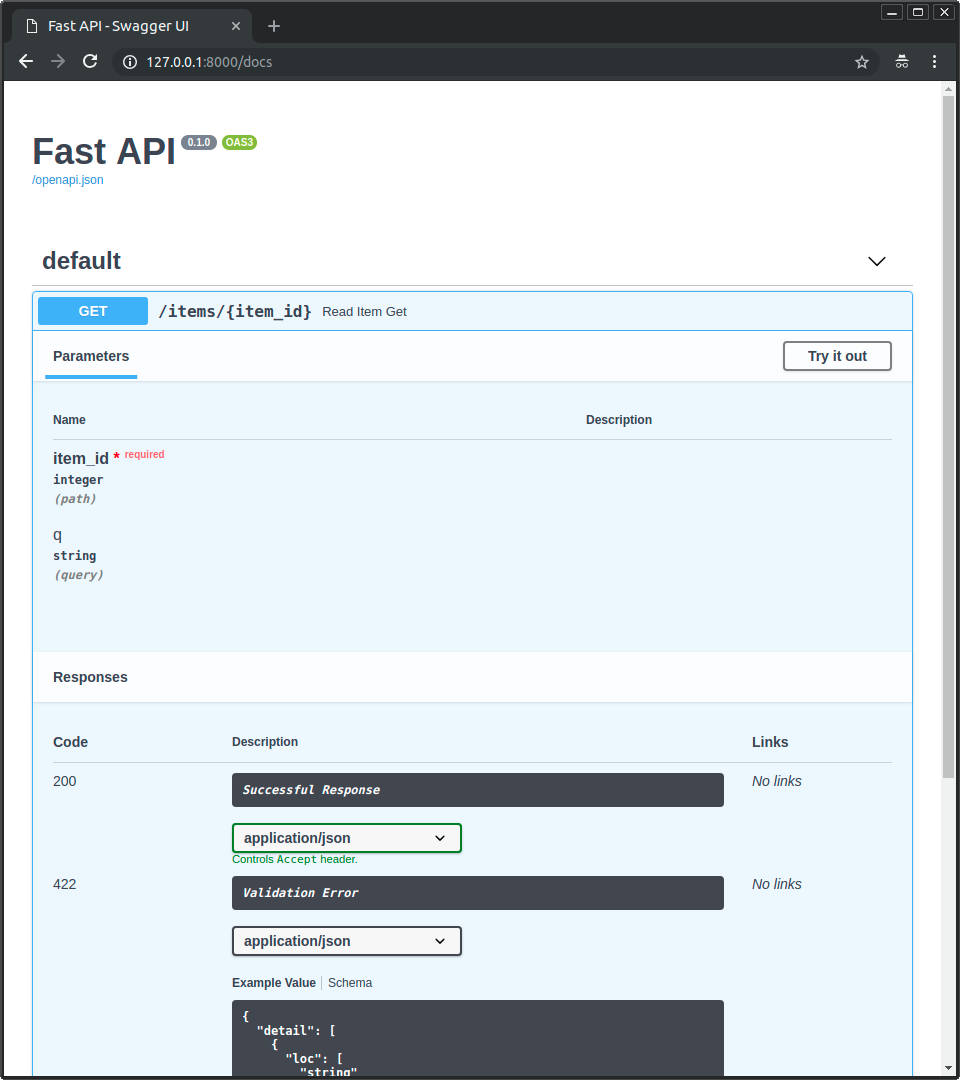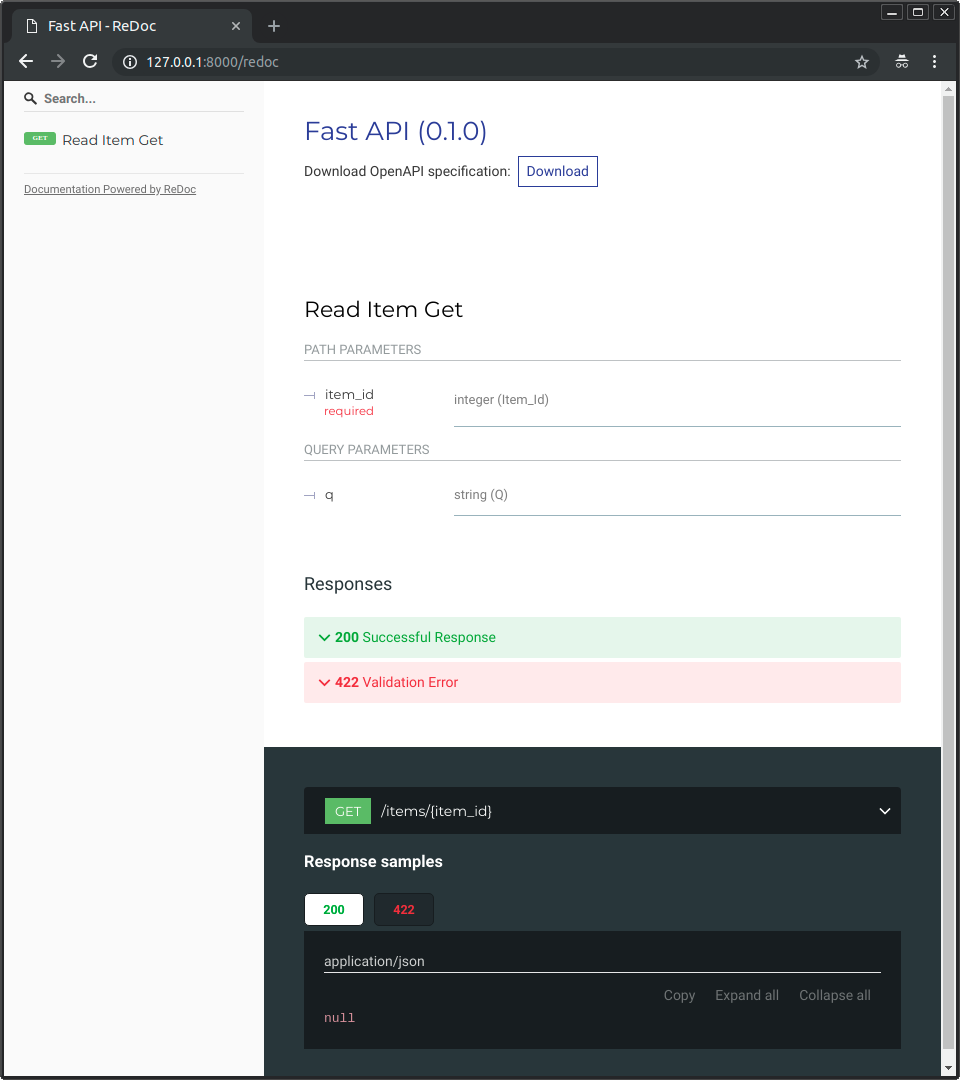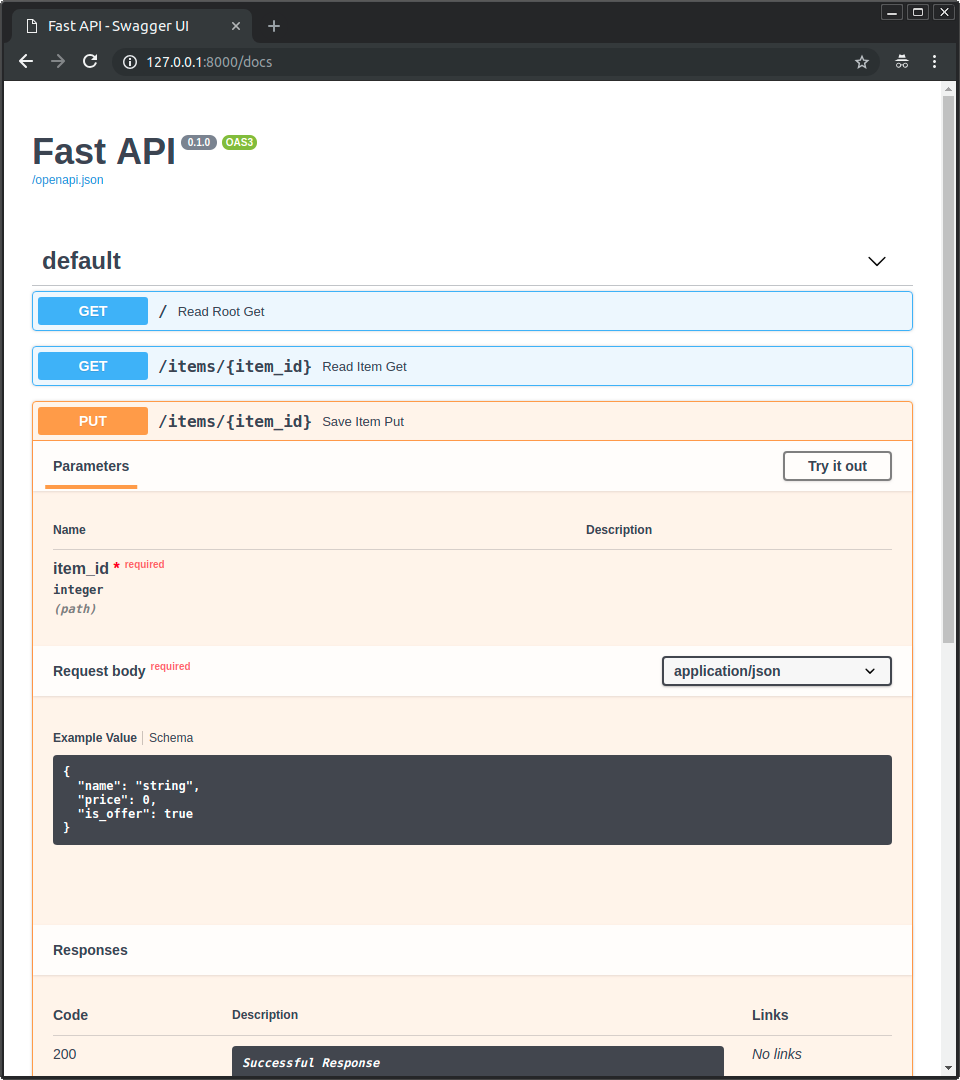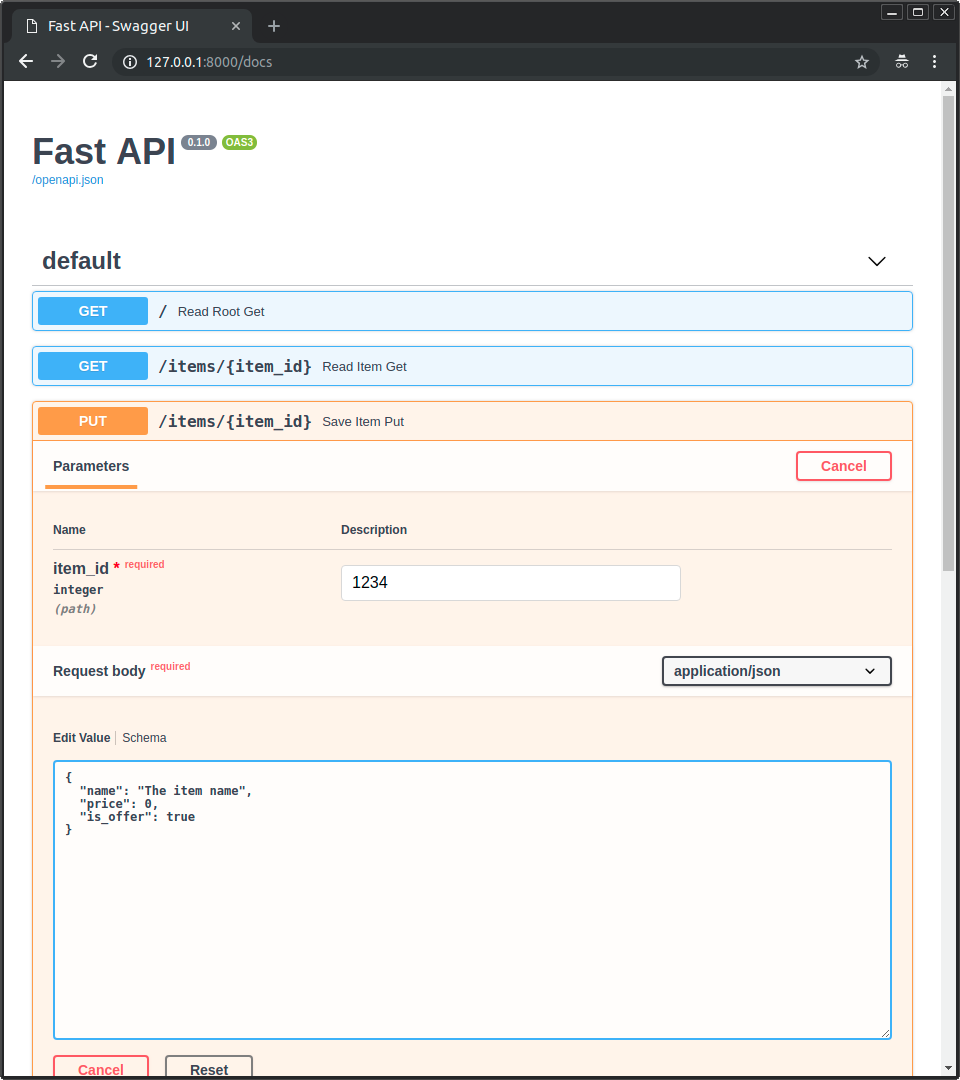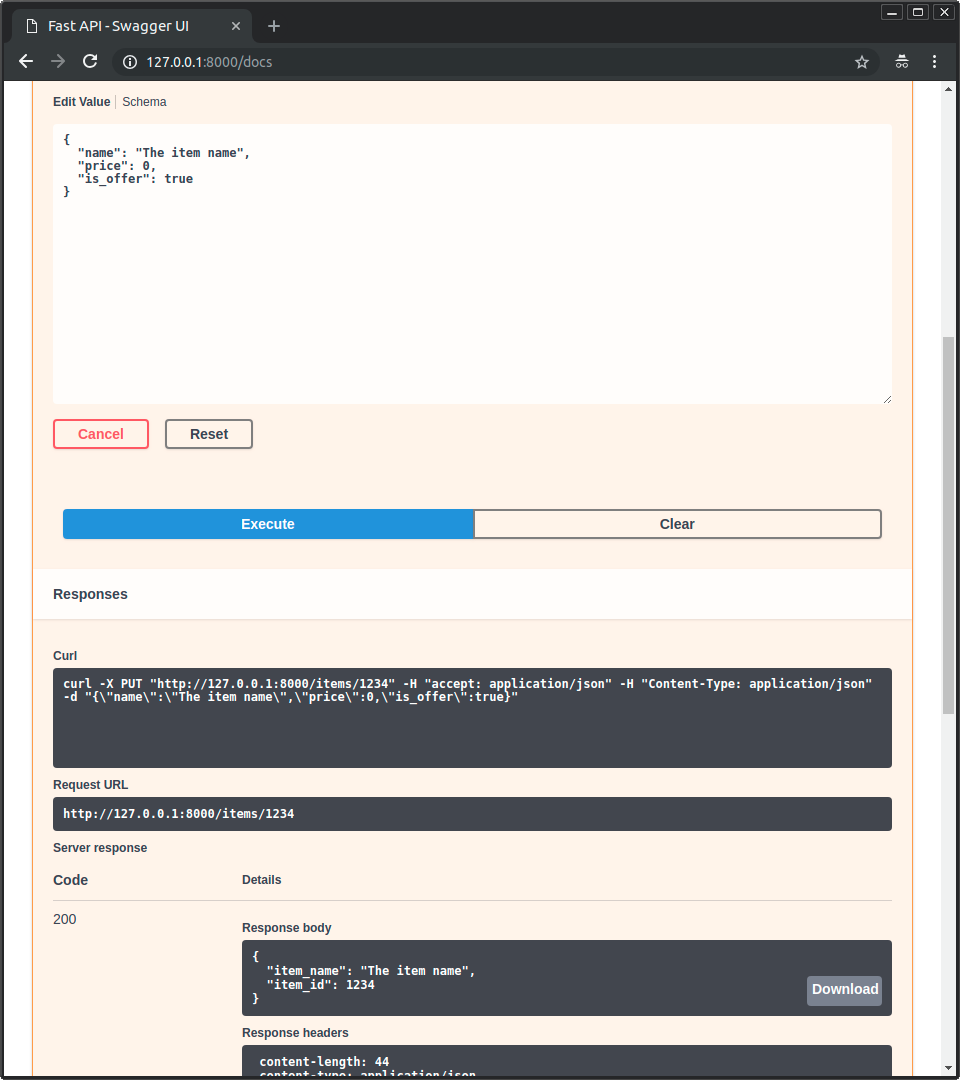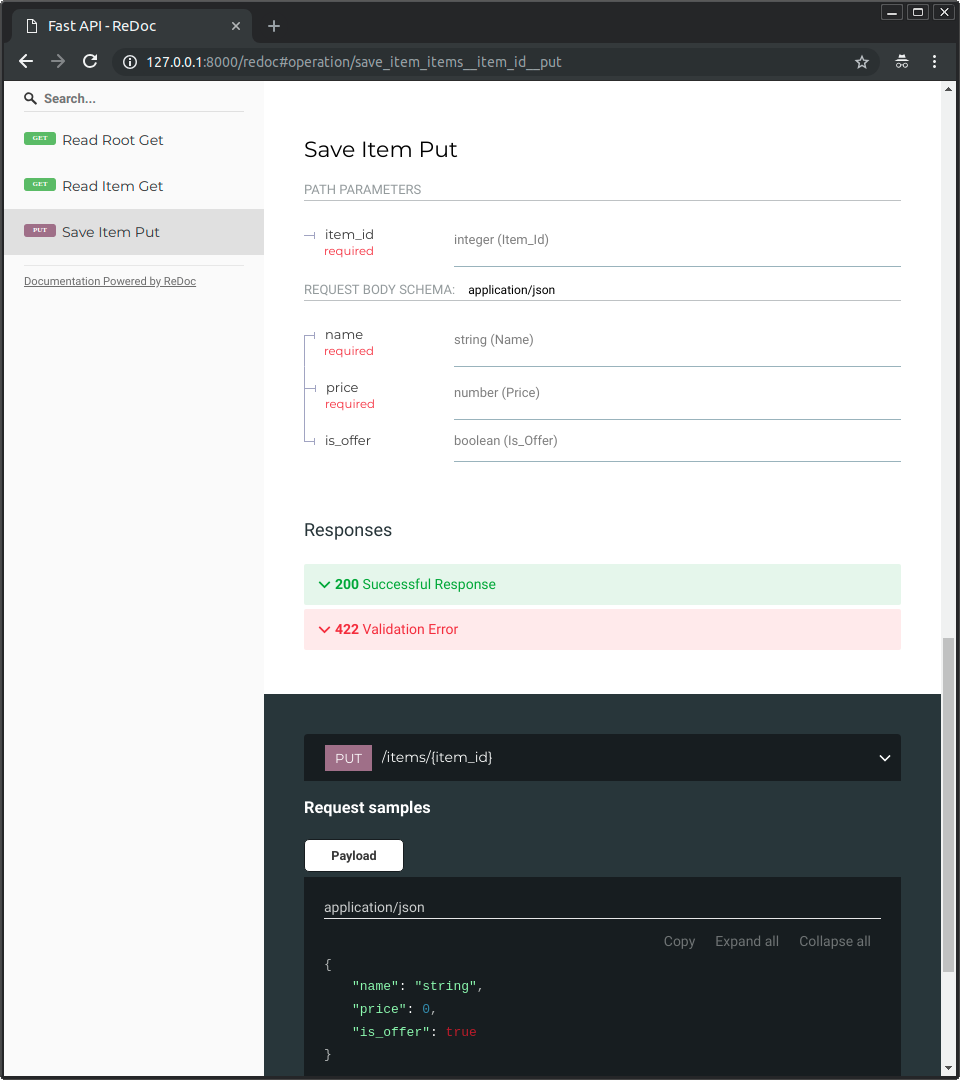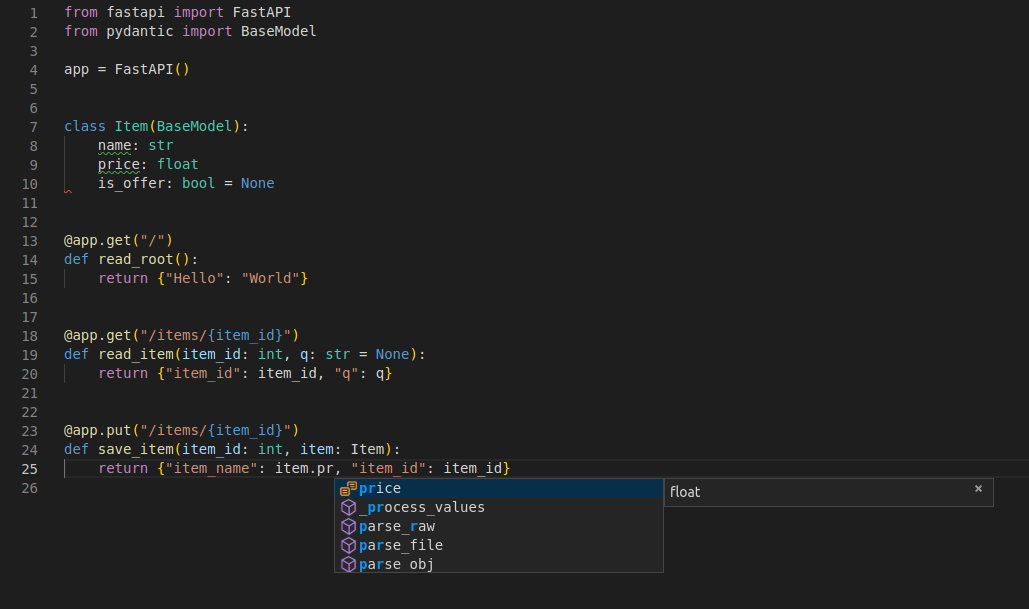FastAPI framework, high performance, easy to learn, fast to code, ready for production
Project description
FastAPI framework, high performance, easy to learn, fast to code, ready for production
Documentation:https://fastapi.tiangolo
Source Code:https://github /tiangolo/fastapi
FastAPI is a modern, fast (high-performance), web framework for building APIs with Python 3.6+ based on standard Python type hints.
The key features are:
-
Fast:Very high performance, on par withNodeJSandGo(thanks to Starlette and Pydantic).One of the fastest Python frameworks available.
-
Fast to code:Increase the speed to develop features by about 200% to 300%. *
-
Fewer bugs:Reduce about 40% of human (developer) induced errors. *
-
Intuitive:Great editor support.Completioneverywhere. Less time debugging.
-
Easy:Designed to be easy to use and learn. Less time reading docs.
-
Short:Minimize code duplication. Multiple features from each parameter declaration. Fewer bugs.
-
Robust:Get production-ready code. With automatic interactive documentation.
-
Standards-based:Based on (and fully compatible with) the open standards for APIs:OpenAPI(previously known as Swagger) andJSON Schema.
* estimation based on tests on an internal development team, building production applications.
Opinions
"[...] I'm usingFastAPIa ton these days. [...] I'm actually planning to use it for all of my team'sML services at Microsoft.Some of them are getting integrated into the coreWindowsproduct and someOfficeproducts."
"We adopted theFastAPIlibrary to spawn aRESTserver that can be queried to obtainpredictions.[for Ludwig]"
"Netflixis pleased to announce the open-source release of ourcrisis managementorchestration framework:Dispatch![built withFastAPI]"
"I’m over the moon excited aboutFastAPI.It’s so fun!"
"Honestly, what you've built looks super solid and polished. In many ways, it's what I wantedHugto be - it's really inspiring to see someone build that."
"If you're looking to learn onemodern frameworkfor building REST APIs, check outFastAPI[...] It's fast, easy to use and easy to learn [...]"
"We've switched over toFastAPIfor ourAPIs[...] I think you'll like it [...]"
Typer,the FastAPI of CLIs
If you are building aCLIapp to be used in the terminal instead of a web API, check outTyper.
Typeris FastAPI's little sibling. And it's intended to be theFastAPI of CLIs.⌨️ 🚀
Requirements
Python 3.6+
FastAPI stands on the shoulders of giants:
Installation
$pipinstallfastapi
---> 100%
You will also need an ASGI server, for production such asUvicornorHypercorn.
$pipinstalluvicorn
---> 100%
Example
Create it
- Create a file
main.pywith:
fromfastapiimportFastAPI
app=FastAPI()
@app.get("/")
defread_root():
return{"Hello":"World"}
@app.get("/items/{item_id}")
defread_item(item_id:int,q:str=None):
return{"item_id":item_id,"q":q}
Or useasync def...
If your code usesasync/await,useasync def:
fromfastapiimportFastAPI
app=FastAPI()
@app.get("/")
asyncdefread_root():
return{"Hello":"World"}
@app.get("/items/{item_id}")
asyncdefread_item(item_id:int,q:str=None):
return{"item_id":item_id,"q":q}
Note:
If you don't know, check the"In a hurry?"section aboutasyncandawaitin the docs.
Run it
Run the server with:
$uvicornmain:app--reload
INFO: Uvicorn running on http://127.0.0.1:8000 (Press CTRL+C to quit)
INFO: Started reloader process [28720]
INFO: Started server process [28722]
INFO: Waiting for application startup.
INFO: Application startup complete.
About the commanduvicorn main:app --reload...
The commanduvicorn main:apprefers to:
main:the filemain.py(the Python "module" ).app:the object created inside ofmain.pywith the lineapp = FastAPI().--reload:make the server restart after code changes. Only do this for development.
Check it
Open your browser athttp://127.0.0.1:8000/items/5?q=somequery.
You will see the JSON response as:
{"item_id":5,"q":"somequery"}
You already created an API that:
- Receives HTTP requests in thepaths
/and/items/{item_id}. - Bothpathstake
GEToperations(also known as HTTPmethods). - Thepath
/items/{item_id}has apath parameteritem_idthat should be anint. - Thepath
/items/{item_id}has an optionalstrquery parameterq.
Interactive API docs
Now go tohttp://127.0.0.1:8000/docs.
You will see the automatic interactive API documentation (provided bySwagger UI):
Alternative API docs
And now, go tohttp://127.0.0.1:8000/redoc.
You will see the alternative automatic documentation (provided byReDoc):
Example upgrade
Now modify the filemain.pyto receive a body from aPUTrequest.
Declare the body using standard Python types, thanks to Pydantic.
fromfastapiimportFastAPI
frompydanticimportBaseModel
app=FastAPI()
classItem(BaseModel):
name:str
price:float
is_offer:bool=None
@app.get("/")
defread_root():
return{"Hello":"World"}
@app.get("/items/{item_id}")
defread_item(item_id:int,q:str=None):
return{"item_id":item_id,"q":q}
@app.put("/items/{item_id}")
defupdate_item(item_id:int,item:Item):
return{"item_name":item.name,"item_id":item_id}
The server should reload automatically (because you added--reloadto theuvicorncommand above).
Interactive API docs upgrade
Now go tohttp://127.0.0.1:8000/docs.
- The interactive API documentation will be automatically updated, including the new body:
- Click on the button "Try it out", it allows you to fill the parameters and directly interact with the API:
- Then click on the "Execute" button, the user interface will communicate with your API, send the parameters, get the results and show them on the screen:
Alternative API docs upgrade
And now, go tohttp://127.0.0.1:8000/redoc.
- The alternative documentation will also reflect the new query parameter and body:
Recap
In summary, you declareoncethe types of parameters, body, etc. as function parameters.
You do that with standard modern Python types.
You don't have to learn a new syntax, the methods or classes of a specific library, etc.
Just standardPython 3.6+.
For example, for anint:
item_id:int
or for a more complexItemmodel:
item:Item
...and with that single declaration you get:
- Editor support, including:
- Completion.
- Type checks.
- Validation of data:
- Automatic and clear errors when the data is invalid.
- Validation even for deeply nested JSON objects.
- Conversionof input data: coming from the network to Python data and types. Reading from:
- JSON.
- Path parameters.
- Query parameters.
- Cookies.
- Headers.
- Forms.
- Files.
- Conversionof output data: converting from Python data and types to network data (as JSON):
- Convert Python types (
str,int,float,bool,list,etc). datetimeobjects.UUIDobjects.- Database models.
- ...and many more.
- Convert Python types (
- Automatic interactive API documentation, including 2 alternative user interfaces:
- Swagger UI.
- ReDoc.
Coming back to the previous code example,FastAPIwill:
- Validate that there is an
item_idin the path forGETandPUTrequests. - Validate that the
item_idis of typeintforGETandPUTrequests.- If it is not, the client will see a useful, clear error.
- Check if there is an optional query parameter named
q(as inhttp://127.0.0.1:8000/items/foo?q=somequery) forGETrequests.- As the
qparameter is declared with= None,it is optional. - Without the
Noneit would be required (as is the body in the case withPUT).
- As the
- For
PUTrequests to/items/{item_id},Read the body as JSON:- Check that it has a required attribute
namethat should be astr. - Check that it has a required attribute
pricethat has to be afloat. - Check that it has an optional attribute
is_offer,that should be abool,if present. - All this would also work for deeply nested JSON objects.
- Check that it has a required attribute
- Convert from and to JSON automatically.
- Document everything with OpenAPI, that can be used by:
- Interactive documentation systems.
- Automatic client code generation systems, for many languages.
- Provide 2 interactive documentation web interfaces directly.
We just scratched the surface, but you already get the idea of how it all works.
Try changing the line with:
return{"item_name":item.name,"item_id":item_id}
...from:
..."item_name":item.name...
...to:
..."item_price":item.price...
...and see how your editor will auto-complete the attributes and know their types:
For a more complete example including more features, see theTutorial - User Guide.
Spoiler alert:the tutorial - user guide includes:
- Declaration ofparametersfrom other different places as:headers,cookies,form fieldsandfiles.
- How to setvalidation constraintsas
maximum_lengthorregex. - A very powerful and easy to useDependency Injectionsystem.
- Security and authentication, including support forOAuth2withJWT tokensandHTTP Basicauth.
- More advanced (but equally easy) techniques for declaringdeeply nested JSON models(thanks to Pydantic).
- Many extra features (thanks to Starlette) as:
- WebSockets
- GraphQL
- extremely easy tests based on
requestsandpytest - CORS
- Cookie Sessions
- ...and more.
Performance
Independent TechEmpower benchmarks showFastAPIapplications running under Uvicorn asone of the fastest Python frameworks available,only below Starlette and Uvicorn themselves (used internally by FastAPI). (*)
To understand more about it, see the sectionBenchmarks.
Optional Dependencies
Used by Pydantic:
ujson- for faster JSON"parsing".email_validator- for email validation.
Used by Starlette:
requests- Required if you want to use theTestClient.aiofiles- Required if you want to useFileResponseorStaticFiles.jinja2- Required if you want to use the default template configuration.Python -multipart- Required if you want to support form"parsing",withrequest.form().itsdangerous- Required forSessionMiddlewaresupport.pyyaml- Required for Starlette'sSchemaGeneratorsupport (you probably don't need it with FastAPI).graphene- Required forGraphQLAppsupport.ujson- Required if you want to useUJSONResponse.
Used by FastAPI / Starlette:
uvicorn- for the server that loads and serves your application.orjson- Required if you want to useORJSONResponse.
You can install all of these withpip install fastapi[all].
License
This project is licensed under the terms of the MIT license.
Project details
Release history Release notifications| RSS feed
Download files
Download the file for your platform. If you're not sure which to choose, learn more aboutinstalling packages.








